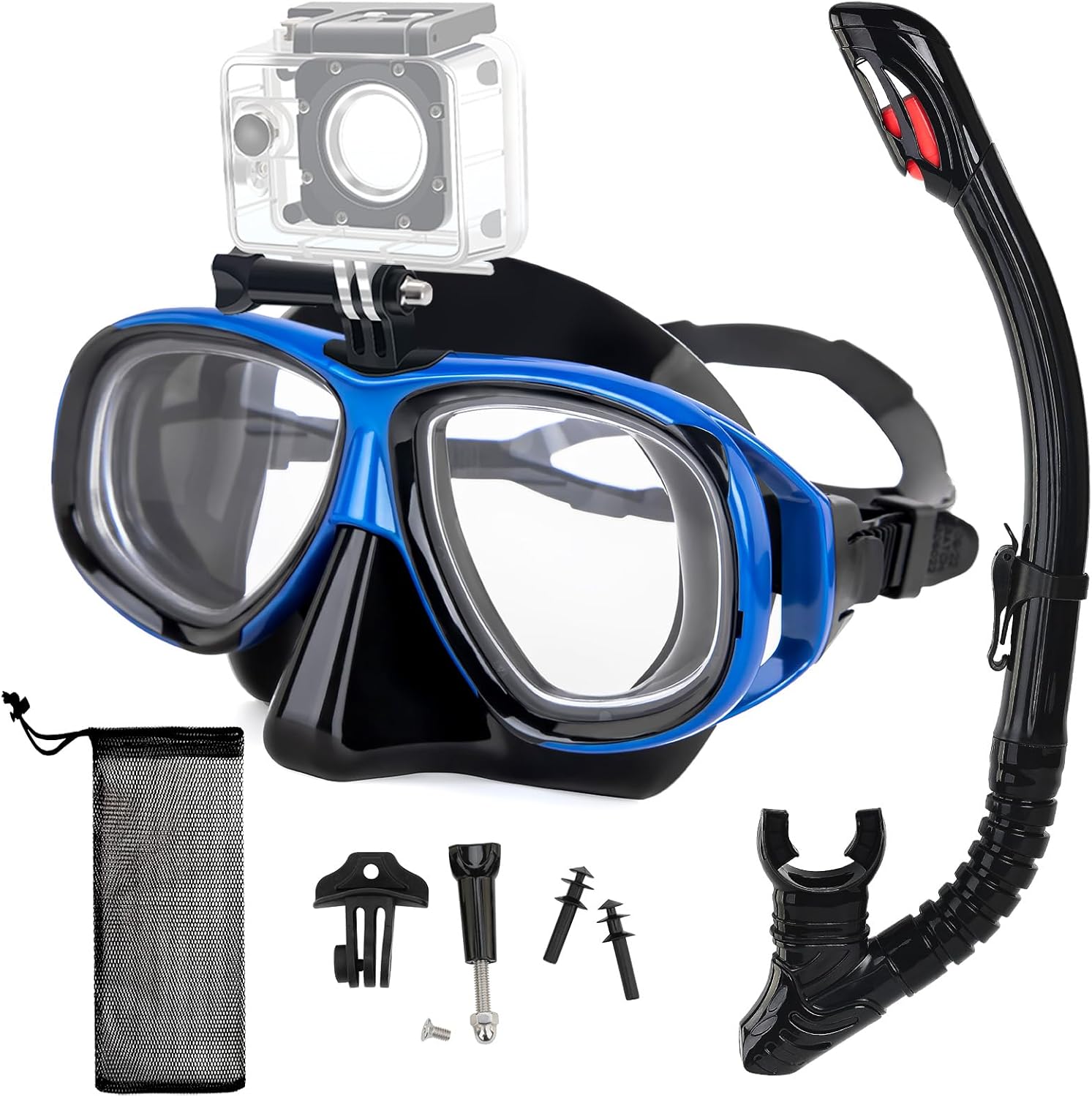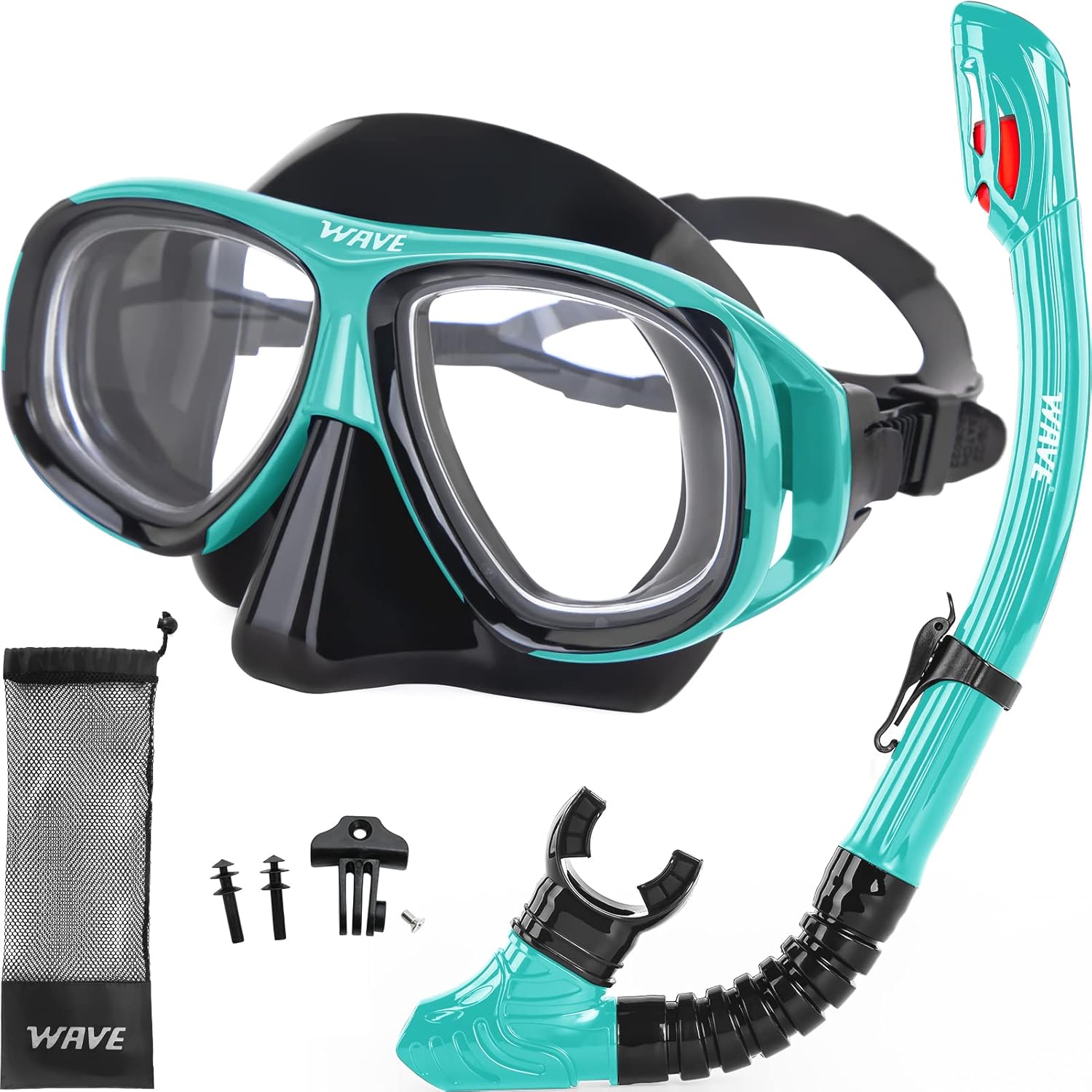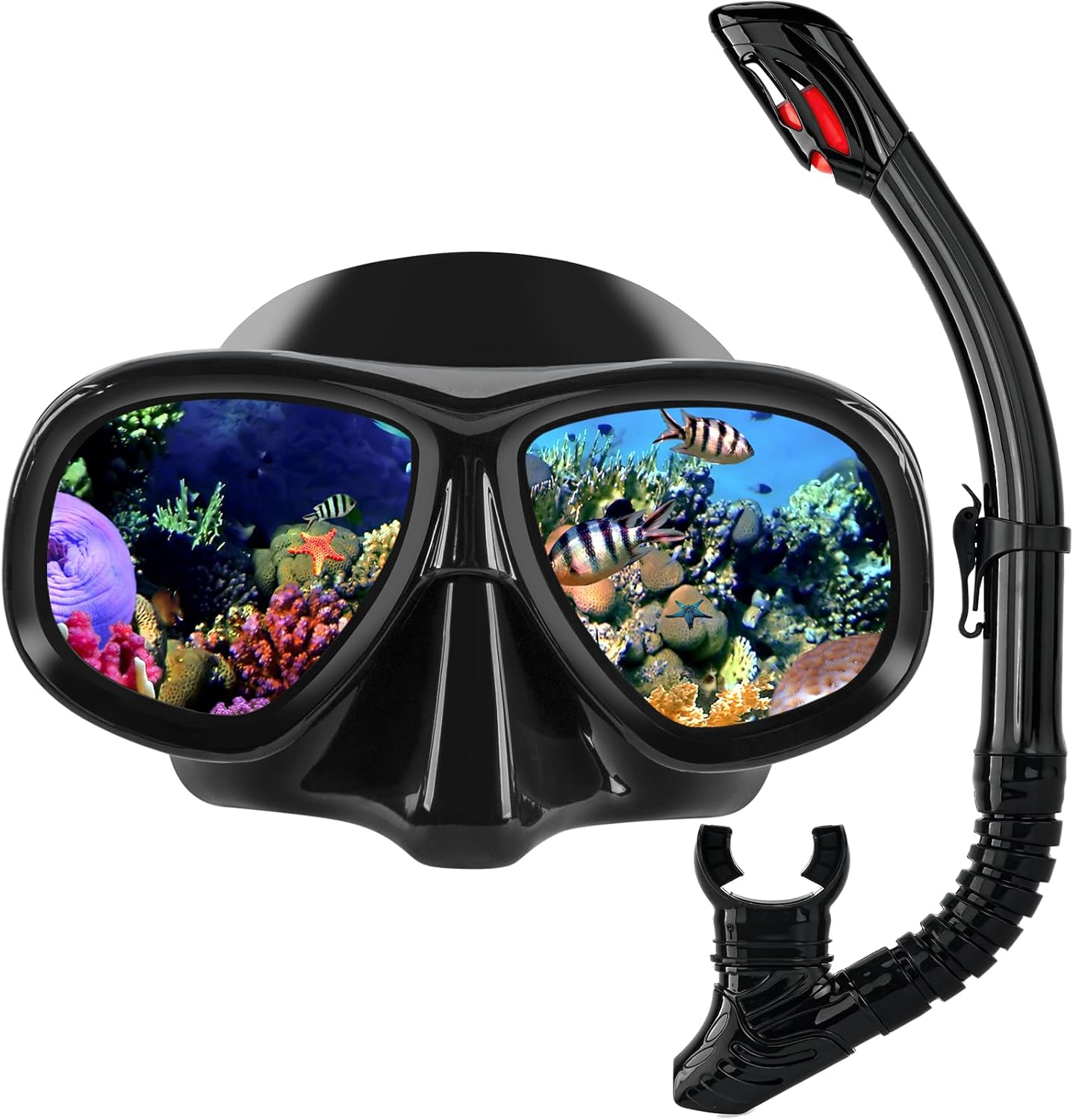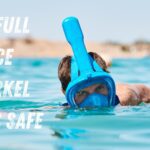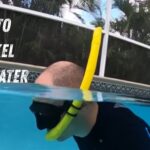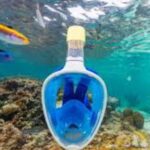How To Clean Snorkel Mask Step-by-Step
How to clean snorkel mask may not be the sexiest question, but unless you enjoy underwater life through a foggy, funky lens, it’s one of the most important things you can learn before your next snorkeling trip.
Snorkel masks are like underwater glasses, except instead of finger smudges, you’re dealing with ocean grime, sunscreen slime, and mysterious smells that scream “I’ve seen things.”
Now here’s a funny fact: most new snorkel masks come coated with a layer of silicone residue, known as the factory film, which is completely invisible and absolutely determined to ruin your tropical vacation by fogging up your view like a hot shower on glass. Yep, your brand-new snorkel mask is actually blurry on purpose until you clean it right. Let’s fix that.
How to Clean Snorkel Mask?
If you want crystal-clear underwater vision and a fog-free snorkeling session, here’s a simple process on how to clean snorkel mask effectively:
Step-by-Step: How to Clean a New Snorkel Mask (and Older Ones Too)
1. Gather Supplies:
- Non-whitening, non-gel toothpaste (yes, toothpaste) or baby shampoo
- A soft-bristled toothbrush or your fingers
- Warm freshwater (not boiling!)
- Clean, soft cloth or towel
2. Remove Factory Film (for new masks):
- Apply a pea-sized amount of toothpaste to the inside of the lens.
- Rub gently in circles with your finger or toothbrush for 2–3 minutes.
- Rinse thoroughly with water.
3. Routine Cleaning (after use):
- Rinse mask and snorkel gear in freshwater immediately after snorkeling to remove salt, sand, and sunscreen.
- Use mild dish soap or baby shampoo to scrub the skirt, strap, and nose pocket.
- Avoid hot water or harsh cleaners, as they degrade the silicone.
4. Drying:
- Air-dry in the shade, not in direct sun, to prevent material breakdown.
- Store in a breathable case, not sealed or zipped up wet.
And that, friend, is the blueprint for how to clean snorkel mask the right way. But if you want to avoid fogging, bacteria, mildew, and that weird smell that makes you question your life choices, there’s more to explore.
Why Cleaning Your Snorkel Mask Is More Than Just a Chore
Think of your snorkel mask like your toothbrush, neglect it and you’ll regret it. Not cleaning your gear:
- Shortens its lifespan
- Encourages bacterial growth
- Triggers mask fogging
- Can lead to skin irritation or eye burning
Properly cleaning snorkel mask gear also ensures it stays crystal clear and smells fresh. Plus, it helps you avoid unnecessary purchases down the line. Nobody likes a moldy surprise when unpacking their snorkeling gear.
How Long Do Snorkel Masks Last?
A high-quality snorkel mask can last anywhere from 3 to 10 years or even longer if properly cared for. On the flip side, a neglected mask (especially one never cleaned or stored properly) might become unusable in just a season or two.
Factors That Affect the Lifespan:
1. Material Quality:
- Silicone skirts last longer than plastic or PVC.
- Tempered glass lenses are more durable than plastic ones.
2. Cleaning Habits:
Regular, proper cleaning (see above) prevents deterioration from salt, sun, and bacteria.
3. Storage Conditions:
Masks kept in hot cars or sealed in damp bags often develop mold, warping, or lens damage.
4. Usage Frequency:
If you snorkel every weekend, expect to replace gear more often than the vacation-only snorkeler.
5. Sun and Chlorine Exposure:
- UV rays can degrade silicone and cause yellowing or brittleness.
- Chlorine dries out mask materials quickly.
Pro Tip: If your mask shows cracking, dry silicone, permanent fogging, or warping, it’s time to replace it, even if it still “looks okay.” Your snorkeling gear is only as safe as its weakest seal.
How to Clean Moldy Snorkel Gear
Yes, it happens more often than you’d think.
Why Mold Happens:
Mold forms when snorkel gear is stored wet, in a warm, dark, airtight space like a sealed dive bag, car trunk, or garage bin. It’s not just gross, it can be a health hazard, especially when inhaled or if it touches your skin or eyes.
Here’s how to clean moldy snorkel gear safely and thoroughly:
Step-by-Step: Mold Removal
1. Rinse Thoroughly
- Rinse all gear under warm water to remove surface dirt and salt.
2. Soak in Vinegar Solution
- Use a mix of 1 part white vinegar to 3 parts warm water.
- Submerge all mold-affected gear in the solution for 30–60 minutes.
Vinegar kills mold spores naturally without harming silicone or glass.
3. Scrub the Mold Off
- Use a soft-bristled toothbrush or sponge.
- Focus on mask edges, snorkel crevices, and under fin straps.
4. Optional: Baking Soda Scrub (for stubborn spots)
- Make a paste of baking soda and water.
- Gently scrub any lingering black or green mold stains.
5. Final Rinse & Dry
- Rinse with fresh water preferably filtered.
- Dry completely in a shaded, ventilated area (no direct sun).
6. Sanitize if Needed
- For severe cases, after cleaning, soak the gear for 10 minutes in a diluted hydrogen peroxide mix (1 part peroxide to 5 parts water).
- Rinse well afterward.
Avoid These Mold Cleaning Mistakes:
- Never use bleach: It damages silicone and accelerates breakdown.
- Don’t use boiling water, it warps the gear.
- Don’t store until completely dry. Mold loves moisture.
How to Clean a Scuba Mask vs. a Snorkel Mask
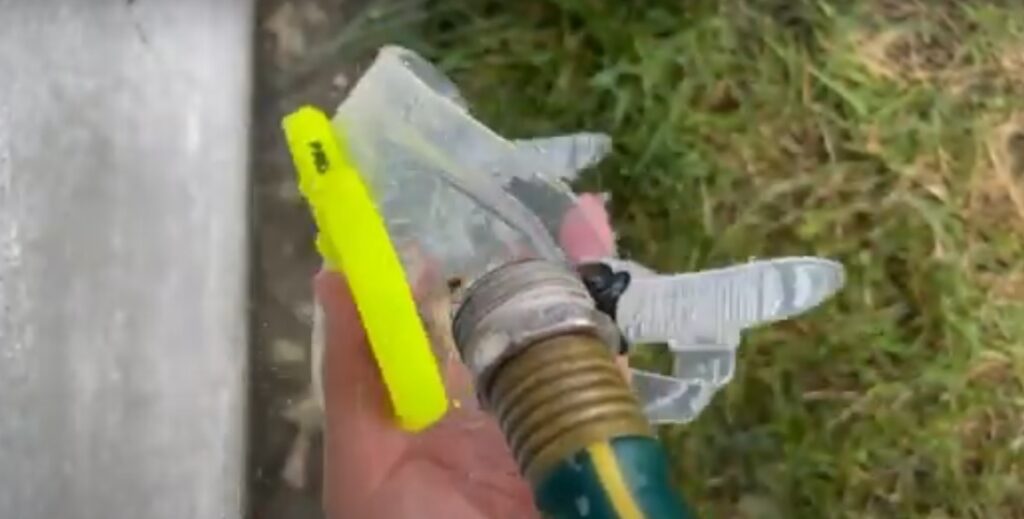
Good news: cleaning a scuba mask is almost identical to cleaning a snorkel mask but with one crucial difference.
Scuba masks tend to be more rigid, feature tempered glass, and are often used with dive computers, anti-fog inserts, or prescription lenses. That means:
- Avoid abrasives at all costs (even more than snorkel masks).
- Use scuba mask cleaning solutions if diving frequently.
- Make sure to rinse extra well after using defog drops, as they may react with pressurized water at depth.
So yes, the same rules apply, but with extra care for divers.
How to Defog Snorkel Mask (Because Spitting Isn’t Always Cool)
The most common issue people have? “I cleaned it, and it still fogged up!” That’s because cleaning snorkel mask and defogging it are two different tasks.
Here’s how to do it like a pro:
The Best Anti-Fog Techniques:
1. Baby Shampoo Hack:
- Apply a drop to the dry inner lens.
- Rub it in, rinse lightly (don’t over-rinse!), and go.
2. Commercial Defoggers:
Available in dive shops. Apply before every session.
3. Spit Trick (Old School):
Effective but, you know… saliva. Better for emergencies.
Don’t confuse this with scuba mask cleaning, this is prep before diving, not post-snorkel maintenance.
How to Clean Snorkel Gear (Not Just the Mask!)
So, you’ve cleaned your mask, great. But what about your snorkel tube?
Let’s talk how to clean snorkel gear from top to bottom.
Steps to Clean the Whole Set:
1. Snorkel Tube:
- Soak in warm water with mild dish soap.
- Use a pipe cleaner or flexible brush to clean the inside.
- Rinse thoroughly and hang dry.
2. Fins:
- Rinse with fresh water.
- Avoid sun exposure, store in cool, dry places.
3. Mask Straps and Skirt:
Wipe gently with a cloth soaked in baby shampoo or vinegar solution.
Remember, how to clean snorkel mask isn’t complete unless the rest of your gear is clean too.
Safe Products to Use (And What to Avoid)
✅ Safe to Use:
- Non-whitening toothpaste (no baking soda)
- Baby shampoo (tear-free)
- Mild dish soap
- Vinegar + water (1:3 ratio for mildew)
- Commercial anti-fog drops
❌ Avoid at All Costs:
- Bleach
- Alcohol wipes
- Hot water
- Abrasive scrubbers
- Windex or glass cleaner
Your snorkeling mask needs gentle love, not chemical warfare.
Storing Your Snorkel Mask the Smart Way
Most people clean their mask… and then store it wet and zipped in a bag. Congratulations, you just created a petri dish.
Proper Storage:
- Dry completely before storing.
- Keep away from direct sunlight or heat.
- Use a mesh bag or case with ventilation.
- Don’t store anything heavy on top of it, silicone skirts warp easily.
If you’re serious about what you need for snorkeling, storage needs to be on that list.
Quick Fixes: Emergency Mask Cleaning Before a Trip
You’re in a hotel room in Oahu, your mask’s foggy, and the tour van is 5 minutes away. Here’s what to do:
- Use baby shampoo from your toiletry kit.
- Rub it on the inside of the lens.
- Rinse gently with bottled water.
- Air dry (or wave it dramatically until the driver honks).
Pro tip: Pack a travel-size spray bottle with a vinegar solution. It’s your emergency snorkel cleaning tool.
Can You Put a Snorkel Mask in the Dishwasher? Please Don’t.
This might seem efficient, but here’s what happens:
- Heat warps the silicone.
- Chemicals strip the lens coating.
- Your snorkeling mask will become a brittle, cloudy mess.
Just use your hands. Your mask will thank you. So will your wallet.
How Safe Are Full Face Snorkel Masks?
|
|
|
They’re trendy, but controversial. While they provide:
- 180° vision
- Easy breathing through mouth and nose
They also:
- Accumulate CO₂ if cheaply made
- Don’t allow for deep dives
- Trap water if improperly sealed
Buy from reputable brands if you go this route, and learn how to use snorkeling gear properly.
Snorkeling Tips for Beginners (That Have Nothing to Do With Cleaning)
- Learn how to snorkel underwater before your trip.
- Choose a snorkel mask that fits snug, not tight.
- Know how much weight you need for snorkeling (usually none, unless freediving).
- Pick calm beaches like those in Oahu or in Florida.
- If you’re not confident in swimming, do you need to know swimming for snorkeling? Not always! Use a float vest and stick to shallow lagoons.
The Bottom Line on How to Clean Snorkel Mask
How to clean snorkel mask is not just a question, it’s a responsibility. You wouldn’t look through a foggy car windshield, right? So don’t dive into paradise with a grimy mask and bacteria-infested snorkel.
By mastering everything from how to clean snorkel mask to scuba mask cleaning to understanding how to defog snorkel mask, you’re ensuring a safer, clearer, and far more enjoyable underwater adventure.
And hey, clean gear is happy gear. The fish you meet might not care how well you clean your mask, but your eyeballs and lungs certainly do.
